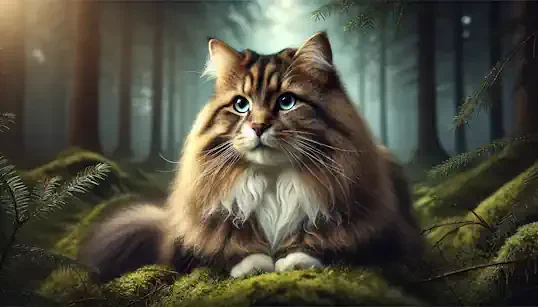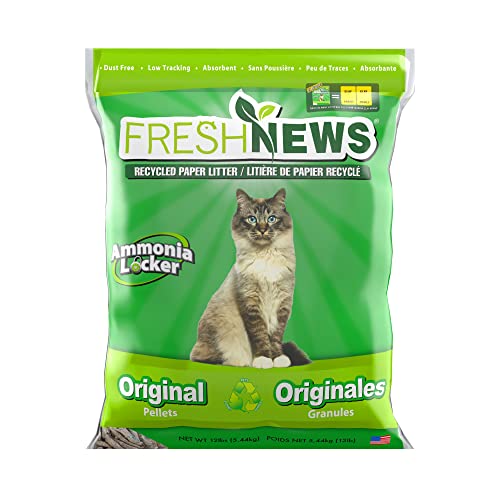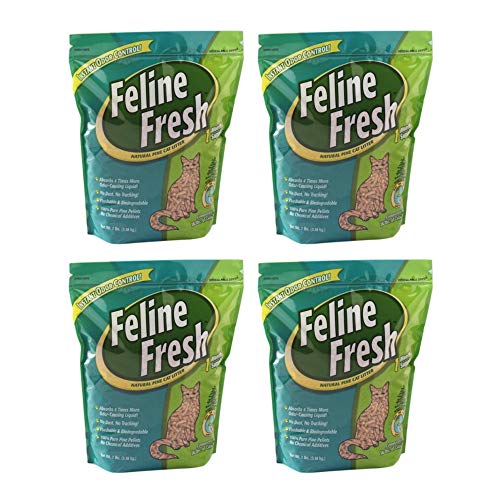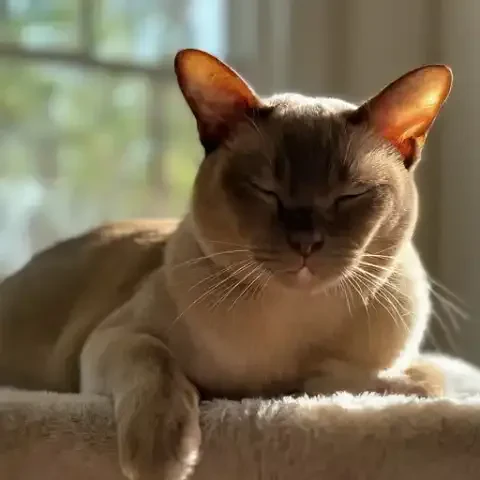Imagine a feline sculpted by the very winds of Scandinavia, a creature whispered about in ancient Norse myths, a living embodiment of rugged beauty with a heart as warm and welcoming as a crackling hearth fire on a winter's night. This is the Norwegian Forest Cat, often affectionately called "Wegie," a breed that embodies the spirit of the wild, yet thrives on the love and companionship of its human family. They are more than just cats; they are living legends, their very presence echoing tales of Viking voyages and mythical creatures of the northern forests. From their majestic, weather-resistant coats to their gentle, adaptable personalities, the Norwegian Forest Cat captivates with a unique blend of untamed beauty and domesticated charm. This article invites you to journey into the enchanting world of the Norwegian Forest Cat, exploring their fascinating history, marveling at their striking appearance, understanding their gentle nature, and discovering the joys and responsibilities of sharing your life with one of these truly remarkable felines.
The story of the Norwegian Forest Cat is deeply intertwined with the rugged landscape and folklore of Norway. Unlike many modern breeds meticulously crafted by human design, the Norwegian Forest Cat is a creature of nature, a product of natural selection and adaptation to the harsh Scandinavian climate. Their origins trace back centuries, likely evolving from farm cats and ship cats that roamed the Norwegian countryside, gradually developing the distinctive traits that define the breed today. These were working cats, skilled mousers and hardy survivors, their thick coats and robust builds essential for enduring the long, cold winters of their homeland. It was nature, not breeders, who honed the Wegie into the magnificent feline we know today. This natural development is a significant part of their appeal, grounding them in a sense of authenticity and wildness that resonates with their fans.
Adding to their mystique is the breed's deep connection to Norse mythology and folklore. In ancient Norse legends, the Norwegian Forest Cat is not just a cat; they are mythical beings, woven into the fabric of Scandinavian culture. They are often associated with the skogkatt, the "forest cat" of Norwegian folktales, a large, long-haired feline of extraordinary strength and beauty. Perhaps most famously, Norse mythology depicts the goddess Freya, the deity of love, beauty, fertility, and warfare, as having her chariot pulled by a team of magnificent cats, often interpreted to be Norwegian Forest Cats. These mythical associations elevate the breed beyond mere pet status, imbuing them with a sense of legend and enchantment. This rich folklore contributes to the breed's enduring appeal, adding a layer of mystique and romance to their already captivating presence, whispering tales of ancient forests and powerful gods.
Despite their long and storied history in Norwegian folklore, formal recognition of the Norwegian Forest Cat as a distinct breed is a relatively recent phenomenon, emerging in the 20th century. As interest in pedigreed cats grew, dedicated Norwegian breeders recognized the unique beauty and value of these natural felines and began the process of establishing them as a recognized breed. Organizations like FIFe (Fédération Internationale Féline) in Europe and later, major registries like the Cat Fanciers' Association (CFA) and The International Cat Association (TICA) in North America, played crucial roles in breed recognition and standardization. Breeders worked diligently to preserve the breed's natural traits, focusing on health, temperament, and the distinctive physical characteristics honed by centuries of natural selection. This dedication to preserving the breed's natural essence, rather than dramatically altering it, is a hallmark of Norwegian Forest Cat breeding. Today, the Norwegian Forest Cat is beloved worldwide, enjoying immense popularity not only in Scandinavia and Europe but also across North America, Asia, and beyond, a testament to their enduring appeal and captivating blend of wild beauty and gentle nature.
The Norwegian Forest Cat presents an immediately striking visual impression, a picture of majestic beauty and rugged strength. Their size alone sets them apart from the average domestic cat, commanding attention with their substantial build and impressive stature. They are classified as a large breed, and that description is no exaggeration; Wegies are noticeably bigger and more robust than many other feline breeds. Their build is muscular and sturdy, reflecting their origins as hardy working cats adapted to harsh conditions. This is not a delicate or dainty breed; they possess a powerful physicality, capable of withstanding the elements and built for enduring strength. Interestingly, they are slow to mature, taking up to five years to reach their full adult size, meaning their magnificent presence gradually unfolds over several years, revealing the full extent of their impressive stature.
The crowning glory of the Norwegian Forest Cat is undoubtedly their magnificent double coat, a marvel of natural engineering designed to protect them from the elements. This double coat is not just about aesthetics; it's a vital adaptation to the cold, wet climates of Scandinavia, providing unparalleled insulation and weather resistance. The undercoat is dense and woolly, providing a layer of warmth and trapping air to insulate against freezing temperatures. Overlying this insulating underlayer is a long, glossy outer coat, composed of water-resistant guard hairs that repel moisture and snow, keeping the cat dry even in harsh conditions. This ingenious double-layered system is what allows them to thrive in cold, snowy climates, providing remarkable protection against wind, rain, and snow. This coat is not static; it is dynamic, undergoing seasonal changes to adapt to the changing weather. In winter, the coat becomes thick and luxurious, providing maximum insulation. In the warmer months of spring and summer, they shed their heavy winter undercoat, resulting in a lighter, more manageable summer coat, although the outer guard hairs remain, maintaining a degree of weather protection.
A key characteristic of their remarkable coat is its water-resistant nature. The outer guard hairs of a Norwegian Forest Cat's coat are naturally water-repellent, a vital adaptation for surviving in wet and snowy environments. This water resistance means that their fur tends to shed water, keeping them drier and warmer in damp conditions. This natural water repellency also contributes to their relatively low-maintenance grooming requirements, especially considering their long fur. The outer coat's ability to repel moisture helps to prevent matting and tangles, making grooming less intensive than one might expect for such a long-haired breed. While regular brushing is still essential, their water-resistant coat provides a degree of self-cleaning and helps to minimize the effort required to maintain their magnificent fur.
Beneath the luxurious fur lies a distinctive triangular head shape, contributing to their "wild" and natural appearance. The Norwegian Forest Cat's head is characterized by a triangular shape, with a straight profile that flows smoothly from the forehead to the tip of their nose, without a pronounced break. Their chin is strong and well-defined, adding to the overall balanced and harmonious proportions of their head. Their almond-shaped eyes are set at a slight slant, further enhancing the triangular facial structure and lending them an alert and intelligent expression. This distinctive head shape, with its straight lines and balanced proportions, contributes significantly to their overall "wild" or "natural" aesthetic, setting them apart from breeds with more rounded or doll-like facial features.
Their eyes, large and almond-shaped, are often described as expressive and intelligent, reflecting the gentle and keen nature of the Wegie. The almond shape, set at a slight slant, enhances their alert and intelligent gaze, conveying a sense of curiosity and gentle wisdom. Eye color in Norwegian Forest Cats is wonderfully varied, with all colors accepted according to breed standards, with no specific relation to coat color, except in pointed varieties where blue eyes are typically seen. This wide range of allowed eye colors, from golds and greens to copper and blue, adds to the breed's visual diversity and allows for a spectrum of captivating gazes. The large size and expressive nature of their eyes contribute significantly to their overall appeal, making eye contact with a Wegie a truly engaging and rewarding experience.
Adding to their majestic silhouette is their bushy tail, a magnificent plume of fur that is often as long as their body itself. The tail of a Norwegian Forest Cat is not just long; it is luxuriously bushy and flowing, creating a truly magnificent plume that enhances their overall balanced and impressive appearance. The tail is carried high and proudly, often waving gently with their movements, adding to their graceful demeanor. Beyond its aesthetic appeal, the tail serves a practical purpose, providing balance and warmth, particularly in cold climates where they can wrap their bushy tail around themselves for added insulation. This magnificent tail is a signature feature of the breed, a final flourish that completes their picture of rugged beauty and natural elegance.
Adding subtle touches of "wildness" to their appearance are their lynx-like ear tufts and prominent toe tufts. Ear tufts, small wisps of hair extending from the tips of their ears, are a charming feature that enhances their natural, slightly untamed look, reminiscent of wildcats. Similarly, their prominent toe tufts, tufts of hair growing between and around their paw pads, are another distinctive characteristic, adding to their rugged appearance and likely providing some insulation and traction on snowy surfaces in their native environment. These subtle yet distinctive features, the ear tufts and toe tufts, add delightful details to their overall appearance, further solidifying their image as a breed forged by nature, carrying subtle echoes of their wild ancestors.
The coat colors and patterns of the Norwegian Forest Cat are as diverse and beautiful as the landscapes of their homeland, reflecting nature's own palette. While pointed patterns are now accepted in some registries, the traditional and most characteristic colors and patterns are those found naturally in the breed, often showcasing earthy, natural tones. Brown tabby is perhaps one of the most iconic colors, evoking images of wild forests and blending beautifully with their rugged appearance. Silver tabby, cream tabby, solid colors like black and white, and tortoiseshell patterns are also common and equally captivating, each variation adding to the breed's visual richness. The overall impression is one of natural beauty, with colors and patterns that harmonize with their "wild" aesthetic, reflecting the earthy tones of their Scandinavian origins.
Beneath the imposing exterior of the Norwegian Forest Cat lies a temperament that is often described as "gentle giant," perfectly capturing their sweet and affectionate nature despite their large size. They are known for being loving and devoted companions, forming strong bonds with their families and displaying a gentle warmth that is truly endearing. Their reputation as "gentle giants" is well-earned; they possess a calm and tolerant demeanor, making them wonderful additions to a variety of households. Their affection is not overly demanding or clingy; instead, it is expressed through quiet companionship, gentle purrs, and a desire to be near their loved ones, offering a comforting and reassuring presence in the home.
Their gentle nature extends to their interactions with families, making them exceptionally well-suited for households with children. Norwegian Forest Cats are renowned for their patience and tolerance with children, especially when raised alongside them. They are generally accepting of the sometimes unpredictable nature of children's play, often displaying remarkable forbearance. Their playful side also endears them to children, readily engaging in games and offering a willing playmate. It's crucial, of course, to teach children how to interact respectfully with cats, ensuring gentle handling and understanding of feline boundaries, but Wegies, with their gentle and tolerant nature, are often wonderfully patient companions for well-behaved children.
Sociability is another hallmark of the Norwegian Forest Cat temperament, extending beyond their human families to encompass other pets as well. They are generally known for their good nature with other animals, including dogs and other cats, often integrating well into multi-pet households. Their adaptable nature and calm demeanor contribute to their ability to coexist peacefully with other furry companions. While proper introductions are always essential when integrating any new pets, Wegies typically adjust well to sharing their home with other animals, often forming amicable relationships and even playful bonds with their housemates.
Intelligence and curiosity are also key components of the Norwegian Forest Cat personality. They possess sharp minds and are naturally inquisitive about their surroundings, always eager to explore and investigate. Puzzle toys are not just amusement for them; they are engaging challenges that tap into their intelligence and problem-solving skills. Their curiosity keeps them actively engaged with their environment, constantly observing, exploring, and seeking out new experiences. This intelligent and curious nature makes them fascinating companions, always alert and interested in the world around them, bringing a sense of liveliness and engagement to the home.
While they enjoy playtime, Norwegian Forest Cats are generally considered moderately active, striking a pleasing balance between playfulness and relaxed companionship. They are not hyperactive or constantly demanding attention, but they do appreciate and need regular playtime to expend energy and stay physically fit. They enjoy chasing toys, climbing cat trees, and exploring their surroundings, but they are also perfectly content to relax alongside their owners, enjoying quiet companionship and gentle affection. Their energy levels are adaptable, fitting well into various lifestyles, making them suitable companions for both active individuals and more relaxed households.
Independence is another notable trait of the Norwegian Forest Cat personality. They are not overly clingy or demanding of attention, possessing an independent streak that allows them to be content in their own company when needed. However, this independence does not equate to aloofness; they are still deeply sociable and enjoy human companionship, seeking out interaction on their own terms. They are often described as "loyal but not needy," perfectly capturing their ability to be devoted companions without being constantly underfoot or demanding constant attention. This balanced nature makes them ideal companions for those who appreciate a cat who is both affectionate and self-sufficient.
Calmness and adaptability are further hallmarks of their temperament, making them remarkably resilient and easy to live with. They possess a generally calm and relaxed demeanor, not easily flustered or stressed by changes in routine or environment. Their adaptable nature allows them to adjust relatively well to different home environments, whether it's a bustling family home or a quiet apartment, as long as their basic needs for space, enrichment, and attention are met. This calmness and adaptability contribute to their reputation as being easy-going and well-suited for a wide variety of owners and living situations.
Even their vocalizations reflect their gentle nature. Norwegian Forest Cats are not known for being excessively talkative or demanding with their voices. Instead, they tend to vocalize softly and gently, using melodic meows and quiet chirps to communicate when necessary. Their vocalizations are often described as pleasant and unobtrusive, adding to their overall calm and gentle presence. They communicate effectively when they need to, but they are not prone to loud or incessant meowing, making them a peaceful and unobtrusive presence in the home.
Caring for a Norwegian Forest Cat, affectionately nicknamed "Wegie," is a rewarding experience, although their magnificent coat does require some attention to maintain its beauty and health. Grooming, while essential, is not excessively demanding compared to some other long-haired breeds. Regular brushing, about two to three times a week, is generally sufficient to prevent mats and tangles and to remove loose hair, especially during shedding seasons. During the spring and fall shedding seasons, when they shed their winter undercoat, more frequent brushing, perhaps daily, is recommended to manage the increased shedding and prevent mats from forming. Occasional baths, as needed, can help to keep their coat clean and healthy, but their water-resistant fur generally helps to repel dirt and grime, reducing the frequency of baths required.
Diet and nutrition are crucial for maintaining the health and vitality of these large and muscular cats. Providing them with a high-quality cat food that is appropriate for their age, size, and activity level is essential. A balanced diet rich in animal protein will support their muscular build and help maintain their luxurious coat. It’s important to feed measured portions and monitor their weight, as Norwegian Forest Cats, like many breeds, can be prone to weight gain if overfed, especially if they are less active indoor cats.
While moderately active, Norwegian Forest Cats still require daily exercise and playtime to stay healthy and happy. Providing them with interactive toys, climbing structures, scratching posts, and puzzle feeders helps to stimulate both their physical and mental well-being. Engaging in interactive play sessions with them daily is also important, allowing them to expend energy and strengthen their bond with their owners. If possible and safe, allowing them access to a secure outdoor space, such as a catio or cat-proof yard, can provide additional enrichment and opportunities for exploration, which they greatly enjoy.
Norwegian Forest Cats are generally considered a hardy and healthy breed, a testament to their natural origins and adaptation to harsh environments. However, like all breeds, they can be predisposed to certain health conditions. Some potential breed-specific health concerns that have been reported, though not necessarily common, include Hypertrophic Cardiomyopathy (HCM), a heart condition, Hip Dysplasia, a joint condition, and Glycogen Storage Disease Type IV, a rare genetic metabolic disorder. Responsible breeders screen their breeding cats for these conditions to minimize the risk of passing them on to their kittens. Choosing a reputable breeder who performs health testing is crucial when acquiring a Norwegian Forest Cat kitten. Regular veterinary checkups throughout their lives are also essential for preventative care and early detection of any potential health issues.
It's also important to adjust their care routine seasonally to accommodate their changing coat. As mentioned earlier, their coat undergoes significant seasonal changes, becoming heavier in winter and lighter in summer. Grooming routines should be adjusted accordingly, with increased brushing during shedding seasons to manage the heavier shedding. Specialized grooming tools, such as shedding blades or undercoat rakes, can be particularly helpful during these periods. In the summer months, their lighter coat requires less intense grooming, but regular brushing remains important to remove loose hair and maintain coat health.
Living with a Norwegian Forest Cat is a truly rewarding experience, bringing a touch of wild beauty and gentle companionship to your home. Their suitable home environments are quite adaptable, making them wonderful companions for a variety of living situations. While they appreciate spacious homes that allow for exploration and play, they can also adapt to apartment living, provided their exercise and enrichment needs are met indoors. However, it’s worth noting that they do thrive in cooler temperatures and might appreciate homes in climates that do not become excessively hot. They are truly great companions for a wide range of owners – families, singles, and seniors alike. Their gentle nature, affectionate personalities, and adaptable temperaments make them well-suited for diverse households and lifestyles. Whether you are a busy family with children or a single person seeking a calm and devoted companion, the Norwegian Forest Cat can bring immense joy and companionship.
While they can adapt to indoor-only lifestyles, it's worth considering their natural appreciation for the outdoors. Ideally, providing them with safe access to a secure catio or cat-proof yard can greatly enrich their lives, allowing them to express their natural curiosity and enjoy the outdoors in a protected environment. However, due to safety concerns such as traffic, predators, and potential exposure to diseases, free-roaming outdoors is generally not recommended. Regardless of whether they have outdoor access or not, providing ample enrichment and mental stimulation indoors is crucial for their well-being. Puzzle feeders, climbing structures, interactive toys, and window perches that allow for birdwatching are all excellent ways to keep their intelligent minds engaged and prevent boredom within an indoor environment.
For those considering welcoming a Norwegian Forest Cat into their lives, it’s natural to have questions. Are Norwegian Forest Cats hypoallergenic? Unfortunately, no cat breed is truly hypoallergenic, and Wegies are not considered hypoallergenic. In fact, due to their dense double coat, they may produce more allergens than some shorter-haired breeds. Individual allergic reactions vary greatly, so spending time with the breed before committing is advisable for allergy sufferers. Are Norwegian Forest Cats good for first-time cat owners? Yes, often considered a good choice for first-time owners due to their gentle and adaptable nature, but new owners should be prepared for their grooming needs and the importance of providing sufficient space and interaction. Do Norwegian Forest Cats shed a lot? Yes, they shed moderately year-round and heavily during shedding seasons in spring and fall. Regular brushing is crucial to manage shedding. Are Norwegian Forest Cats expensive? The purchase price from breeders can be moderate to high depending on lineage and breeder reputation. Ongoing costs are similar to other cats, although their larger size may mean slightly higher food bills, and grooming supplies may be a bit more involved due to their long coat. How long do Norwegian Forest Cats live? Typically, with good care, they live for 12-16 years, and often longer. Are Norwegian Forest Cats prone to any specific health problems? They are generally healthy, but potential predispositions include HCM, hip dysplasia, and GSD IV. Responsible breeding minimizes these risks. Are Norwegian Forest Cats good indoor cats? Yes, they thrive indoors as long as they are given enough space, enrichment, and interaction. Safe outdoor access, like a catio, is a bonus. Can Norwegian Forest Cats be left alone? They are more independent than some breeds and can tolerate being alone for reasonable periods, but they still need and enjoy companionship and should not be left alone excessively for long durations. What's the best way to play with a Norwegian Forest Cat? They enjoy a variety of play styles, including interactive toys, chasing, and climbing. Puzzle feeders and treat balls that stimulate their hunting instincts are also excellent choices. Where can I get a Norwegian Forest Cat? Reputable breeders are the best source for kittens, ensuring health and good temperament. Breed-specific rescues and general cat rescues may also occasionally have adult Norwegian Forest Cats available for adoption.
In conclusion, the Norwegian Forest Cat is more than just a beautiful pet; it is a living legend, a gentle giant whispering tales of ancient forests and Norse gods. They embody a captivating blend of wild beauty and unwavering companionship, bringing a touch of untamed elegance and a wealth of affection into the modern home. Their natural beauty, gentle temperament, adaptable nature, and connection to rich folklore combine to create a feline companion unlike any other. For those seeking a cat who is both strikingly beautiful and deeply devoted, a creature who brings a touch of the wild into the warmth of home, the Norwegian Forest Cat is a breed that truly embodies enduring appeal and offers a lifetime of gentle companionship and quiet, majestic grace. To embrace a Norwegian Forest Cat is to welcome a piece of living history, a whisper of the wild, and a heart of gold into your life, a journey filled with quiet companionship and the enduring magic of a truly legendary feline.






